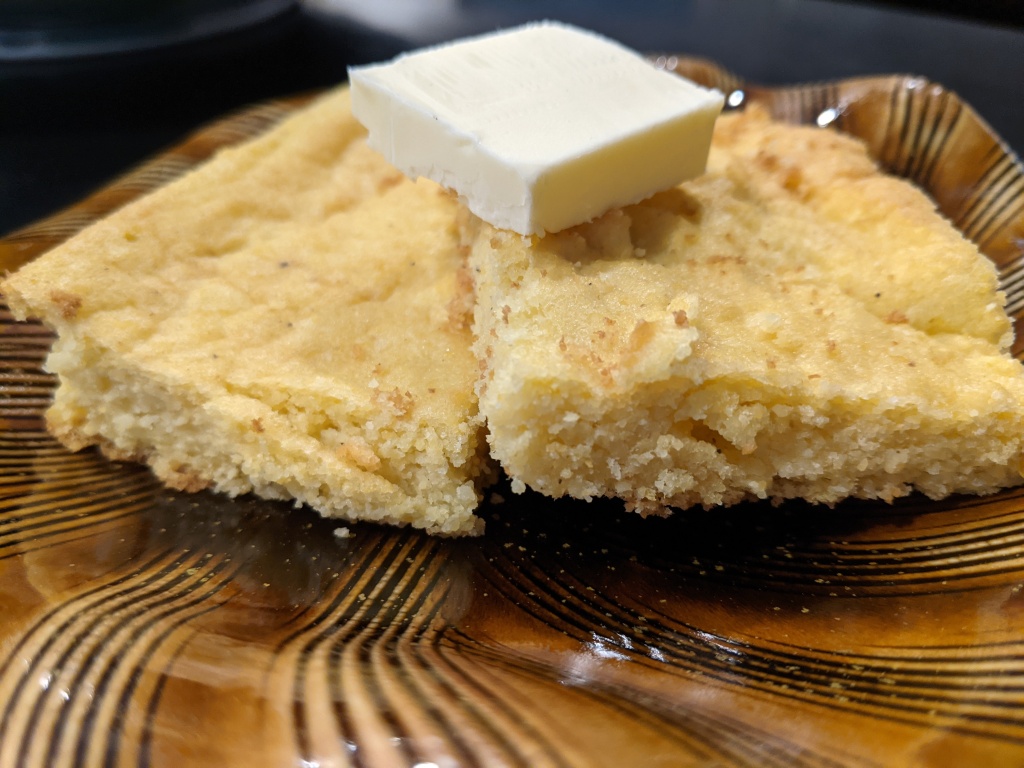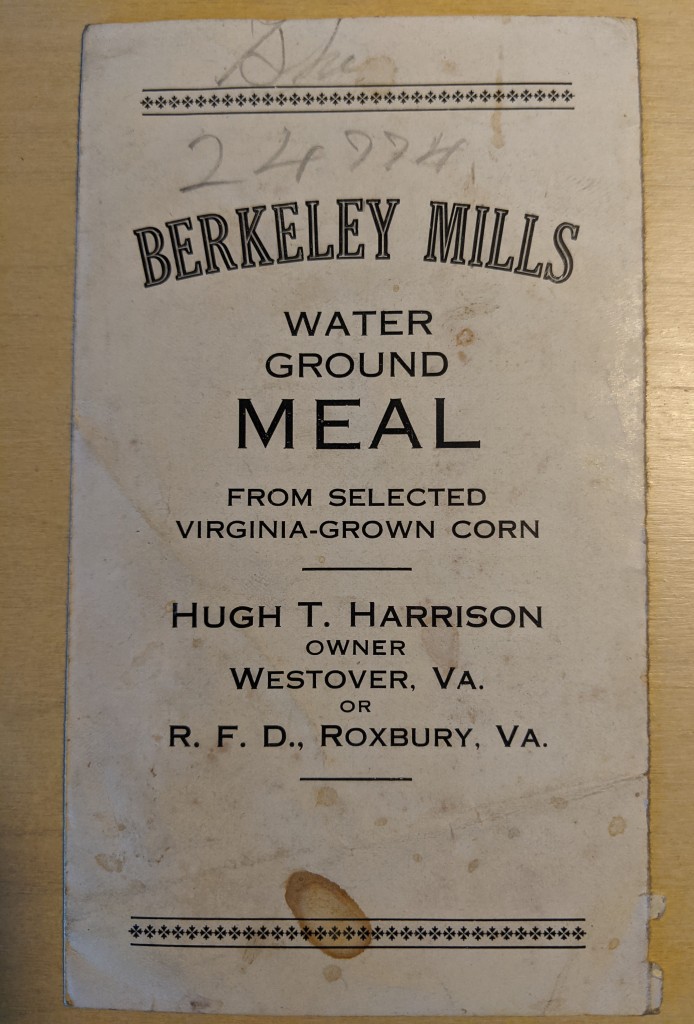
There must be as many recipes for cornbread as there are cooks who have made it. The common ingredient is corn meal, but the shortening, the sweetener, and the type of corn meal itself varies from region to region, and kitchen to kitchen.
I found this recipe from Berkeley Mills in a pamphlet in my grandmother’s files. The mill’s owner, Hugh T. Harrison, seems to be connected Berkeley Plantation, where a signer of the Declaration of Independence and former Virginia governor lived. U.S. President William Henry Harrison was born there. Berkeley still operates as an historic site, telling the story of a Thanksgiving celebration in 1619 and the Union occupation during the Civil War. Before the war, the Harrisons owned enslaved people. The grounds of the home looked authentic enough to become the setting for the movie “Harriet” about the life of Harriet Tubman.
The pamphlet, likely published in the 1930s, sounds like an early advertisement for heirloom ingredients, telling people how to use the “water-ground meal from selected Virginia-grown corn.” There are two versions of “Batter Bread.” Because I like a strong flavor of corn meal, I chose the one without flour or sugar. The eggs and baking powder gave this bread a cake-like texture, making it good as a side dish or a snack. Below is the slightly adapted version. The company is long gone but it’s nice to taste this Virginia recipe with colonial connection.
Old Virginia Batter Bread No. 1
Makes 16 squares
1 cup corn meal
1/2 teaspoon salt
1 teaspoon baking powder
1 cup milk
1 cup water
2 teaspoons lard or butter, melted
2 eggs
Directions:
In a bowl, sift together the meal, salt, and baking powder.
In a pan, bring to a boil the milk and water.
Pour the milk mixture onto the meal and add the lard or butter. Mix well and stir in the eggs.
Pour into a greased baking dish or pan (I used an 8-inch square pan). Bake at 400 degrees for about 20 minutes until a toothpick comes out clean and the top is golden brown. Cool slightly before cutting into squares for serving.


